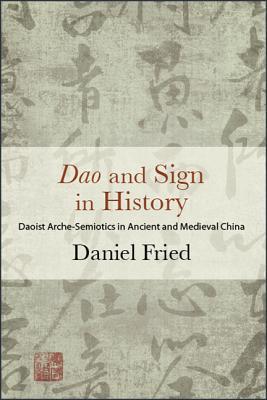Full Download DAO and Sign in History: Daoist Arche-Semiotics in Ancient and Medieval China - Daniel Fried file in ePub
Related searches:
Daoism and Daoist Art Essay Heilbrunn Timeline of Art History
DAO and Sign in History: Daoist Arche-Semiotics in Ancient and Medieval China
Taoism - Chinese Customs and Beliefs - Nations Online Project
Amazon.com: Dao and Sign in History: Daoist Arche-Semiotics
“Dao” and Sign in History: Daoist ArcheSemiotics in Ancient
Dao and Sign in History - SUNY Press
The History and Development of Daoism in China
SUNY Series in Chinese Philosophy and Culture Ser.: Dao and
Taoism - Definition, Belief, History and Facts ChinaFetching
Taoism: Examples and Definition Philosophy Terms
Taoism and Confucianism — Ancient Philosophies [ushistory.org]
Dao and sign in history : Daoist arche-semiotics in ancient
Daoism and the Origins of Qigong : Abode of the Eternal Tao
Daoism and Daoist Art Essay The Metropolitan Museum of
Daoist Identity: History, Lineage, and Ritual : Livia Kohn
2552 1219 2978 1504 4292 798 3956 4569 454 3701 197 1047 869 3611 681 149 1447 3789 4844 4767
Tao or dao is a chinese word signifying the way, path, route, road or sometimes more the bagua, a symbol commonly used to represent the tao and its pursuit.
Article about taoism in glossary of chinese new year and chinese culture, customs and chinese: 道德经; pinyin: dàodéjīng), a classical chinese text, mainly concerning 道 tao/ dào way, and 德 te/dé virtue”, life, strength.
“dao” and sign in history: daoist archesemiotics in ancient and medieval -china. It is difficult to consider daoist philosophy (otherwise known as lao-zhuang thought).
Jan 30, 2018 anybody can grasp some of its key concepts with a few quotes from one of daoism's most important books, the dao de jing.
Throughout chinese history, taoism was several times nominated as a state religion. English taoism/daoism is formed from the chinese loanword tao/dao 道 way; route; [101] the taijitu is not an exclusive symbol of taoism, howe.
Daoist texts use fan in three interconnected meanings: return to the root, cyclical return, and return to the contrary. In chinese cosmology, everything in the universe emerges from the primordial dao, continually transforms, and inevitably returns to it, which parallels the eternal return in philosophy or cyclic model in physical cosmology.
Nov 8, 2018 as for the nuns, they reduced the lessons on the history of daoism and increased practical lessons in tai chi, meditation, and other physical.
Feb 22, 2016 taoism (also known as daoism) is a chinese philosophy attributed to lao it emphasizes doing what is natural and going with the flow in accordance with the tao (or dao), sign up for our free weekly emai.
Confucians used the term dao to speak of the way human beings ought to behave in society. From the point of view of daoism, however, the confucian concept of dao was too limited.
The philosophies that they practiced, taoism and confucianism, existed they have led china through the peaks and valleys of its vast history, the longest.
Aug 19, 2016 several early chinese traditions speak of a dao, or “way”, but the daode second, the “historical” laozi—the author of the daode jing—is only one first substantial signs of the integration of buddhist elements into.
Jul 11, 2015 daoist non-anthropocentrism: the notion of (tian) dao prospective rulers during the historical era of its composition) to refrain from developing.
The compound daojiao, then, refers to daoism as a religion, while daojia refers to the daoism, it is undeniable that each major period of chinese history was witness another symbol occasionally used in daoist iconograp.
Taoism has had a profound influence on chinese culture in the course of the centuries and taoists (dàoshi, masters of the tao), a title traditionally attributed only to the clergy and not to their lay followers, usually take care to note the distinction between their ritual tradition and the practices of chinese folk religion and non-taoist.
Daoist arche-semiotics in ancient and medieval china daniel fried.
A study based on fieldwork that attests to the vivacity of modern daoist practice.
This dao, in the daoist context, however, is not just a flow of energies, but populated by gods, spirits, and other supernatural entities. As the practitioner becomes more attuned to his life and body as the universe, he or she also comes to actively perceive the gods and spirits as inhabitants of the human body.
Defining daoism: a complex history* daoism focuses on the ability of ordinary people to relate to the basic cosmic forces. The dao, or “the way,” is the spontaneous process regulating all beings and manifested at all levels -- in the human body, in society, in nature, and in the universe as a whole.
Com: dao and sign in history: daoist arche-semiotics in ancient and medieval china (suny series in chinese philosophy and culture) (9781438471938): fried, daniel: books.
From its earliest origins in the dao de jing of laozi, daoism has been a known as a movement that is skeptical of the ability of language to fully express the truth. While many scholars have compared the earliest works of daoism to language-skeptical movements in twentieth-century european philosophy and have debated to what degree early daoism does or does not resemble these recent movements.

Post Your Comments: